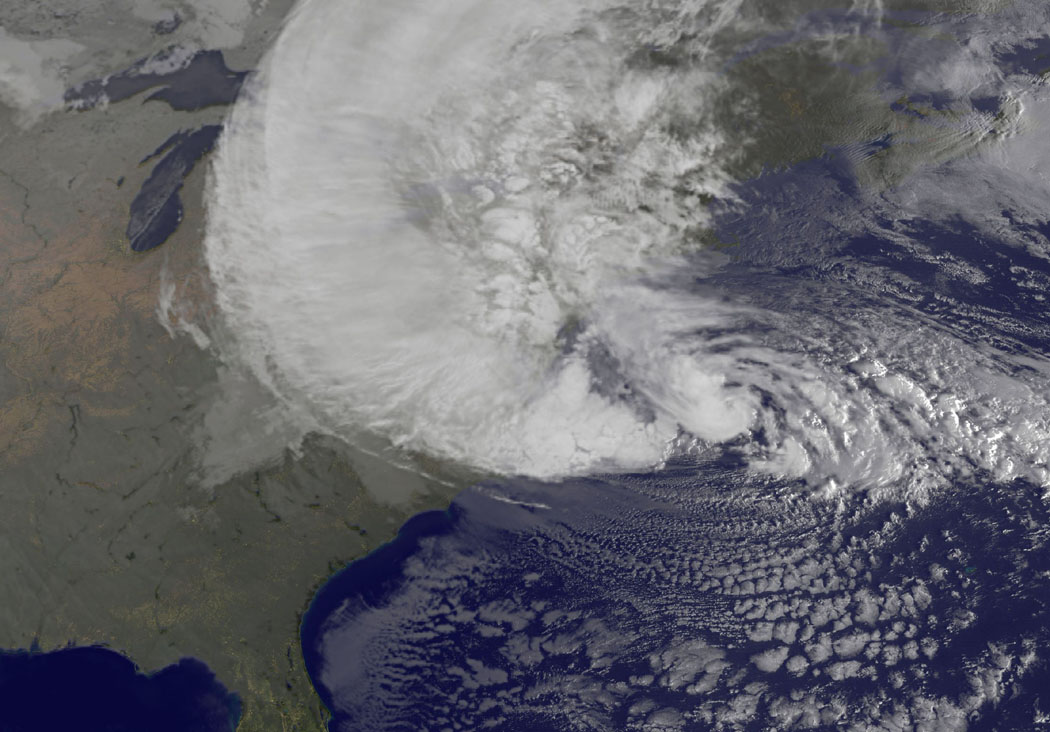Hurricane Sandy Database
| Home | Field Trip | Geographic | Electric Power | Transit | Meteorological | Reports | In the Media |
|---|
 NOAA's GOES-13 satellite captured this visible image of Hurricane Sandy battering the U.S. East coast on Monday, Oct. 29 at 9:10 a.m. EDT.
NOAA's GOES-13 satellite captured this visible image of Hurricane Sandy battering the U.S. East coast on Monday, Oct. 29 at 9:10 a.m. EDT.
Credit: NASA GOES Project
The storm was blamed for more than 100 deaths in the United States, including 41 in New York City, 23 in New Jersey and 3 in Connecticut. Before it began its crawl toward the Northeast, the storm left more than 60 people dead in the Caribbean. [New York Times, November 8, 2012]Even though the Saffir-Simpson Scale has been recently modified [NWS (2009)], the description of Sandy as a tropical cyclone did not reflect the severity of the storm surge, which extended further inland at a higher elevation than was ever anticipated. Flooding occurred in coastal communities from North Carolina to Massachusetts [usgs.gov] with depths as high as 19 feet [5.8 meters]. Overland flooding estimates are still being compiled as data are collected for more than 500 [straight line] miles [804 km] of affected coastline [usgs.gov].
A detailed Tropical Cyclone Report of Hurricane Sandy can be found in National Hurricane Center's Data Archive, including synoptic history, meteorological statistics, casualties and damages, and the post-analysis best track (six-hourly positions and intensities).
Contact: reed uw.edu
uw.edu
![]()
![]()
| Collaborative Research Effort: | ||||
|---|---|---|---|---|
Acknowledgment: This material is based upon work supported by the National Science Foundation RAPID Collaborative for Hurricane Sandy under Grant Number CMMI 1316290 (Professor Dorothy Reed at the University of Washington), CMMI 1316301 (Professor Carol Friedland at the Louisiana State University) and CMMI 1316335 (Professor Rae Zimmerman at New York University).
Disclaimer: This material is based upon work supported by the National Science Foundation under Grant Number CMMI 1316290 RAPID Collaborative for Hurricane Sandy. Any opinions, findings, and conclusions or recommendations expressed in this material are those of the author(s) and do not necessarily reflect the views of the National Science Foundation.